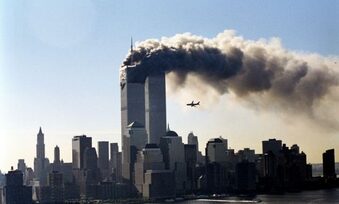 To view the Great Siege of Malta, as a PowerPoint, with pictures, click here. "Why should I care about dates and dead people?" Frequently we hear expressions of exasperation against the teaching of history. "What possible relevance could all those events of long ago have for me today?" Real History Has Great Relevance Well, take 9/11. Did those responsible just choose an arbitrary date for the aircraft hijackings and terror attacks on 11 September 2001? The Strategic Significance of September 11 Those who know the history of Islamic Jihad can point out that September 11 is a most significant date for Jihadists. It was on 11 September 1565 that the Ottoman Turkish siege of Malta was decisively defeated. 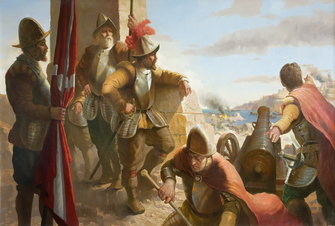 The Great Siege of Malta Sultan Suleiman had mobilised the largest armada yet seen: 193 ships, 48,000 fighting men, including 6,000 Spahis (cavalry), and over 6,300 of the elite Janissaries, to wipe the Knights of St. John off the face of the earth and capture the strategic island of Malta for Islam. Outnumbered To oppose them on the Christian side, there were less than 700 Knights of St. John, 400 Spanish soldiers, 800 Italian soldiers, 200 Greek and Sicilian soldiers, and approximately 3,000 militia drawn from the Maltese population. Along with other civilians who were given weapons, a total force of less than 9,000 men. 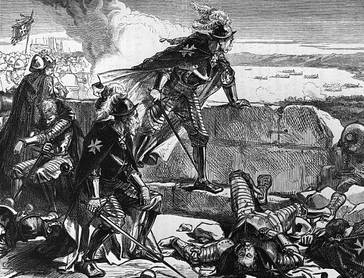 The Knights of St. John The Knights of St. John were respected as the toughest soldiers in Christendom. They were in the very frontline of the battle to keep Europe safe from Islamic Jihadists. Four Months of Furious Fighting In all, over 130,000 cannon balls were fired from Turkish guns against the Christian defenders of Malta. The siege lasted from 18 May to 11 September 1565. The Turks lost over 30,000 men in their futile attempt to overwhelm the tiny Christian garrison on Malta. The day the Muslims were chased off Malta was 11 September 1565.  The Siege of Vienna The last great Turkish threat to the heart of Europe was defeated at the gates of Vienna, 11 September 1683. The siege of Vienna began 14 July 1683, and is recognised as the high water mark of the Ottoman Turkish Empire as it threatened the very heartland of Europe. The Ottoman Turkish army of 300,000 men, included 12,000 Janissaries. The Battle of Vienna A relief force of Bavarian, Saxon and Polish forces routed the Ottoman Turks, who lost over 60,000 men in the siege, of which 40,000 Turks died during the Battle of Vienna on 11 September 1683.  Defeat and Disgrace For his disgrace in losing this vital battle, the Ottoman Commander Kara Mustafa Pasha was executed in Belgrade, 25 December 1683, by strangulation. Croissant Celebration To celebrate the defeat of the Turks at the Battle of Vienna, the bakers designed the croissant, a crescent shaped pastry, to commemorate the victory of the Christian forces over the Jihadists of Islam. As the bakers put it, they had the Turks for breakfast! It was the Vienna born, Queen Mary Antoinette, who introduced the croissant to France in 1770.  Bagel Commemoration The bakers also presented the first bagel as a gift to King Jan Sobieski of Poland to commemorate the king's victorious cavalry charge which broke the Turkish lines. The bagel was fashioned in the form of a stirrup. Cappuccino and Coffee Shops Another anecdote is that, as the Viennese discovered many bags of coffee in the abandoned Ottoman encampment, the first Coffee House was opened in Vienna by Franciszek Kulczycki and a Capuchin Friar, Marco de-Aviano, invented Cappuccino. 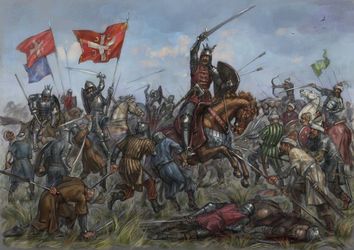 Assassination in Sarajevo 28 June 1914 marked the shots that sparked the First World War. It was on that date that the heir to the throne of the Austria-Hungarian Empire, Archduke Frans Ferdinand, and his beloved wife, Sophie, were assassinated in Sarajevo, Bosnia. The Battle of Kosovo For hundreds of years Sarajevo had been under Ottoman Turkish Muslim rule. The Austrians had liberated Bosnia and Herzegovina from the Ottoman Turkish Empire in 1878. The date chosen for the state visit of Archduke Frans Ferdinand to Sarajevo was a date of painful historic significance for the Serbs. It was the anniversary of their disastrous defeat at the hands of the Ottoman Turks at the Battle of Kosovo, 28 June 1389. 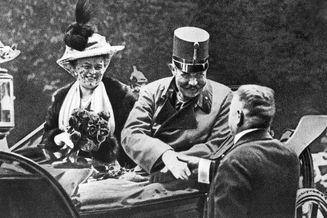 Security Implications of Strategic Dates Archduke Frans Ferdinand and his wife Sophie, were celebrating their 14th Wedding anniversary on that same day, 28 June 1914. However, the security services should have noted the danger of a state visit to such a volatile, cosmopolitan, half-oriental city as Kosovo, particularly on such a sensitive and highly symbolic date as the anniversary of the Battle of Kosovo – a major rallying point for Serb nationalists. Everything Has Consequences So, when people question whether dates and dead people in history are of any relevance to us today, they need to remember that history illustrates the consequences of ideas and actions. In history we can see examples and illustrations of man's depravity and rebellion against God, and God's mercy, grace and sovereignty in intervening in the course of human events. History and Warnings History provides us with the visions of those who impacted society for good and ill and examples of excellence to inspire us to courageously stand firm in spite of all opposition. We need to learn from the mistakes of others, to benefit from the painstaking developments and sacrifices of the past. "To be ignorant of what happened before you were born is to remain a child forever." said Cicero. 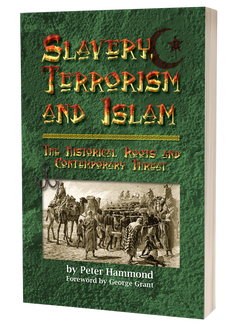 Learn From History We must learn from history, or we will repeat its mistakes. "If we do not know our own history, we will simply have to endure all the same mistakes, sacrifices and absurdities all over again." declared Aleksandr Solzhenitsyn. "Those who cannot remember the past are condemned to repeat it." George Santayana. Understand the Times In the Scriptures we are commanded to understand the times, so that God's people might know what we ought to do (1 Chronicles 12:32). Forewarned is Forearmed The longer you look back, the further you can look forward. A tall building needs to lay deep foundations. A tall tree needs a deep root system. In order to understand who we are, we need to understand where we came from. We need to understand the events and issues of the past that correspond with our challenges today. In order to anticipate problems and threats in the future, we need to study the past. We need to liberate our thinking from current fashions and recognise potential potholes and traps. There are immeasurable insights and practical help to be gained from studying the people, events and issues that shaped the past and affect our present situation. "Now these things became our examples, to the intent that we should not lust after evil things, as they also lusted… now all these things happened to them as examples and they were written for our admonition…"
1 Corinthians 10:6-11 Dr. Peter Hammond Frontline Fellowship P.O. Box 74 Newlands 7725 Cape Town South Africa Tel: 021 689 4480 Email: [email protected] Website: www.FrontlineMissionSA.org www.ReformationSA.org www.hmsschoolofchristianjournalism.org Dr. Peter Hammond is the author of Slavery, Terrorism and Islam – The Historical Roots and Contemporary Threat. See also: The Forces Behind Terrorism and How It Can Be Defeated The Great Siege of Malta Assassination in Sarajevo Resisting the Islamic Invasion Trojan Horse Reformation or Islamisation? Slavery, Terrorism and Islam is available as an E-Book Church History Manual is available as an E-Book
0 Comments
Leave a Reply. |
More Articles
All
Archives
July 2024
|
"And Jesus came and spoke to them, saying, “All authority has been given to Me in heaven and on earth.
Go therefore and make disciples of all the nations, baptizing them in the name of the Father and of the Son and of the Holy Spirit,
teaching them to observe all things that I have commanded you; and lo, I am with you always, even to the end of the age.” Amen.” Matthew 28: 18-20
Go therefore and make disciples of all the nations, baptizing them in the name of the Father and of the Son and of the Holy Spirit,
teaching them to observe all things that I have commanded you; and lo, I am with you always, even to the end of the age.” Amen.” Matthew 28: 18-20
|
P.O.Box 74 Newlands 7725
Cape Town South Africa |
|
 RSS Feed
RSS Feed
